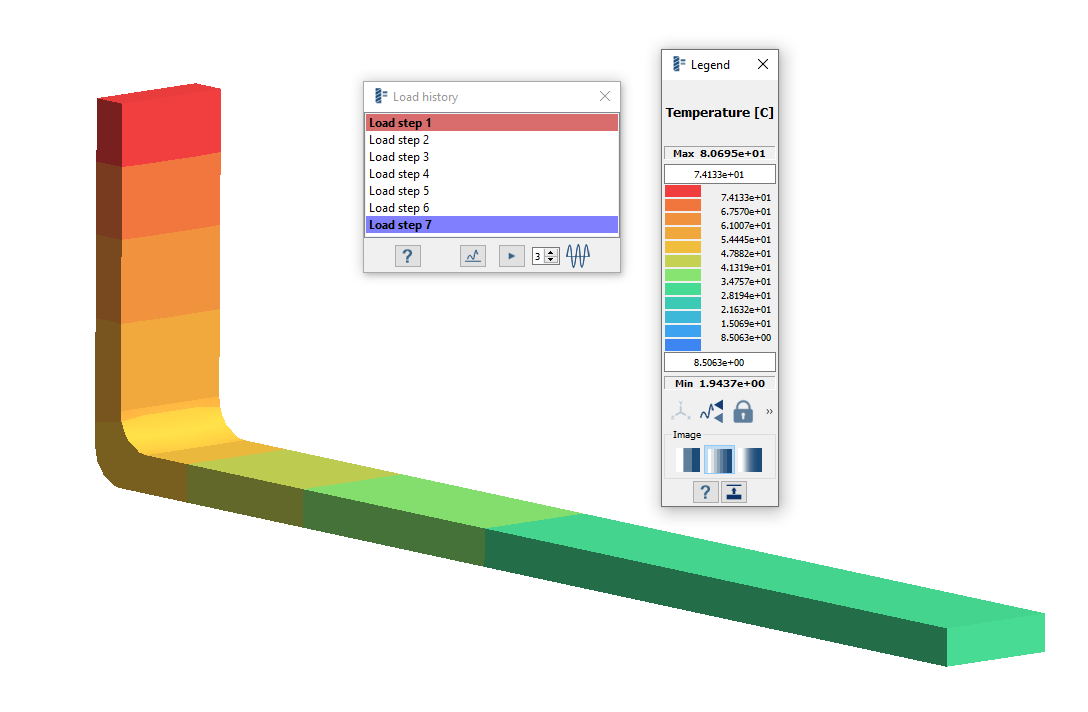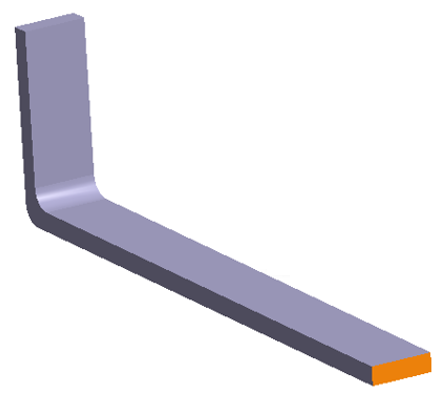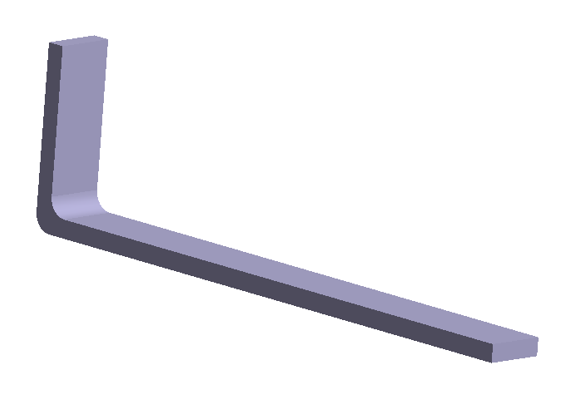SS-T: 4055 Structural Thermal Imported Analysis
Tutorial Level: Intermediate Create a structural thermal imported analysis, and then create and link to a thermal-stress analysis SimSolid.
- Purpose
- SimSolid performs meshless
structural analysis that works on full featured parts and assemblies, is
tolerant of geometric imperfections, and runs in seconds to minutes. In this
tutorial, you will do the following:
- Learn to create and link thermal imported analysis.
- Model Description
- The following model file is needed for this tutorial:
- ThermalImported.ssp
Open Project
- Start a new SimSolid session.
-
On the main window toolbar, click Open Project
 .
.
- In the Open project file dialog, choose ThermalImported.ssp
- Click OK.
Create Thermal Analysis
-
In the main window toolbar, click .
The new analysis appears in the Project Tree as a Thermal branch.
- On the Project Tree, open the Analysis Workbench.
-
In the Analysis Workbench, click
 and import
Temperature.csv.
and import
Temperature.csv.
Edit Solution Settings
- In the Analysis branch of the Project Tree, double-click on Solution settings.
- In the Solution settings dialog, for Adaptation select Global+Local in the drop-down menu.
- Click OK.
Run Analysis
- On the Project Tree, open the Analysis Workbench.
-
Click
 Solve.
Solve.
Review Results
- In the Project Tree, select Thermal Imported 1 subcase.
-
On the Analysis Workbench, select .
The Legend and Load History windows appear and the modeling window displays the contour plot.
Figure 2. 
- In the Load history window, select the subcase to view the corresponding temperature plot.
-
Click
 Show history graph to view a plot of the displayed
response history.
Show history graph to view a plot of the displayed
response history.
-
Click
 Animate history to animate the time history step by
step.
Animate history to animate the time history step by
step.
- Close all results dialogs.
Create Structural Thermal Analysis and Define Thermal Load
-
On the main window toolbar, click
Structural Analysis
 ➔
Structural thermal.
Tip: You can also right-click on an existing Thermal imported analysis and select .
➔
Structural thermal.
Tip: You can also right-click on an existing Thermal imported analysis and select . -
In the Thermal load window, select Link to a
Thermal analysis result.
Thermal imported analysis is automatically selected in the window.Note: If more than one analysis is present, manually choose the thermal imported analysis from the list.
Figure 3. 
- Click OK.
Create Immovable Support
-
On the Analysis Workbench, click
 Immovable support.
Immovable support.
- In the dialog, verify the Faces radio button is selected.
-
In the modeling window, select the faces highlighted in
orange from the figure below.
Figure 4. 
- Click OK.
Edit Solution Settings for Structural 1
- In the Analysis branch of the Project Tree, double-click on Solution settings: for Structural 1.
- In the Solution settings dialog, for Adaptation select Global+Local in the drop-down menu.
- Click OK.
Run Analysis
- On the Project Tree, open the Analysis Workbench.
-
Click
 Solve.
Solve.
Review Combined Results
-
On the Analysis Workbench
toolbar, click
 Results plot.
Results plot.
-
Select Displacement Magnitude.
The Legend and Load history windows open.
-
Click
 Show history graph to view a plot of the displayed
response history.
Show history graph to view a plot of the displayed
response history.
-
Click
 Animate history to animate the time history step by
step.
Animate history to animate the time history step by
step.
- Close all results dialogs.
View Reactions
-
On the Analysis Workbench toolbar, click
 Reaction/contact force.
Reaction/contact force.
- In the Supports tab, select Immovable 1.
- For Reactions, select Force Magnitude from the drop-down menu.
-
Click Evaluate.
A plot appears showing the reaction force magnitude at Immovable 1 at each timestep.
- Optional: Click Save to save the plot as an image or the data as a text file.
